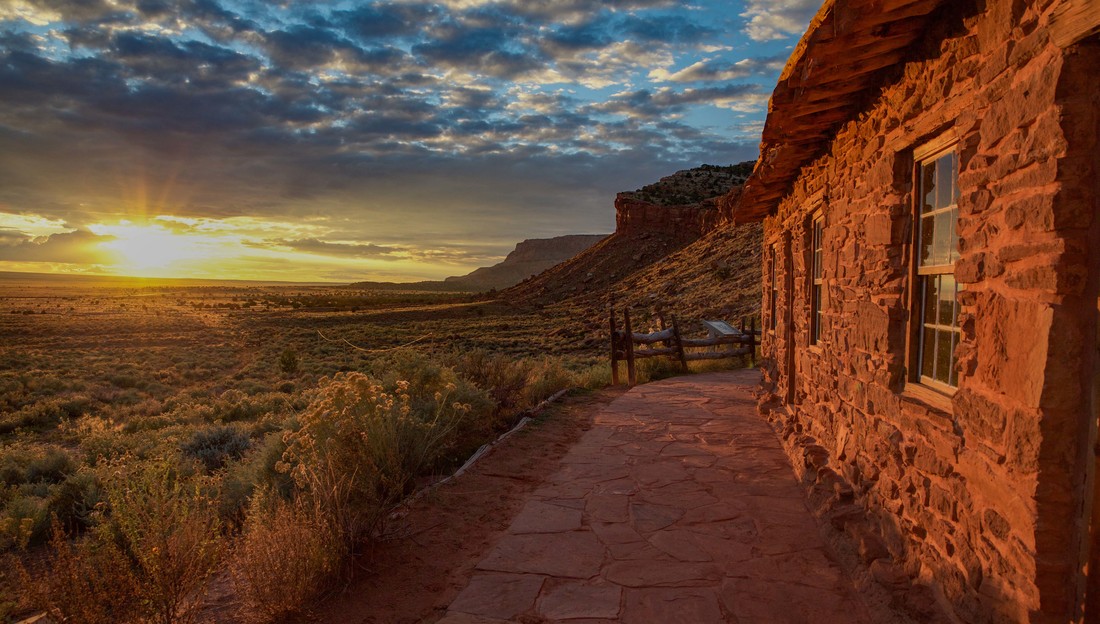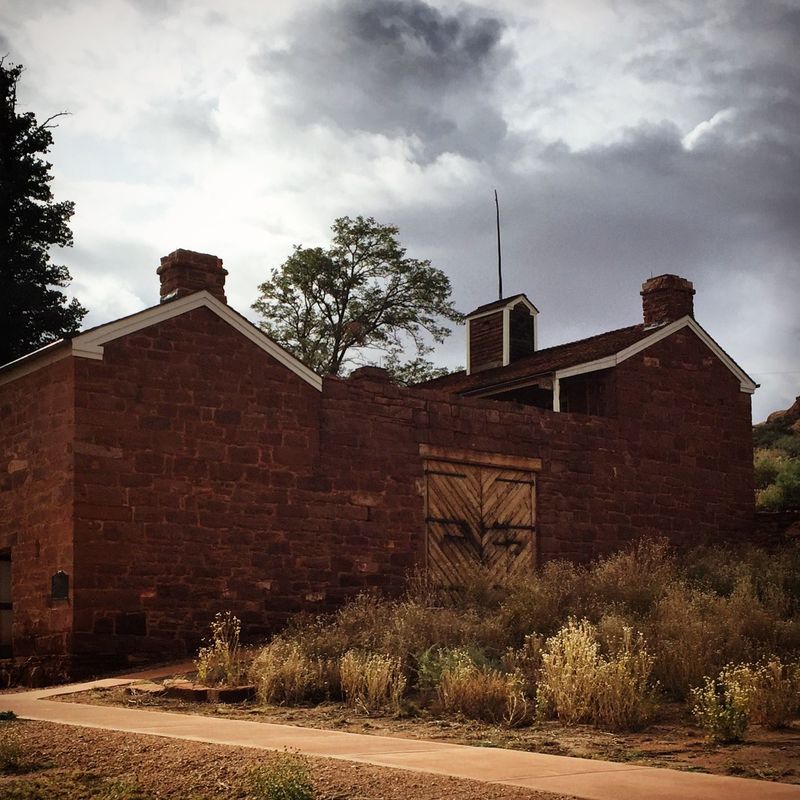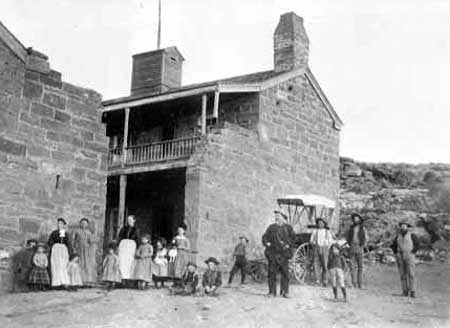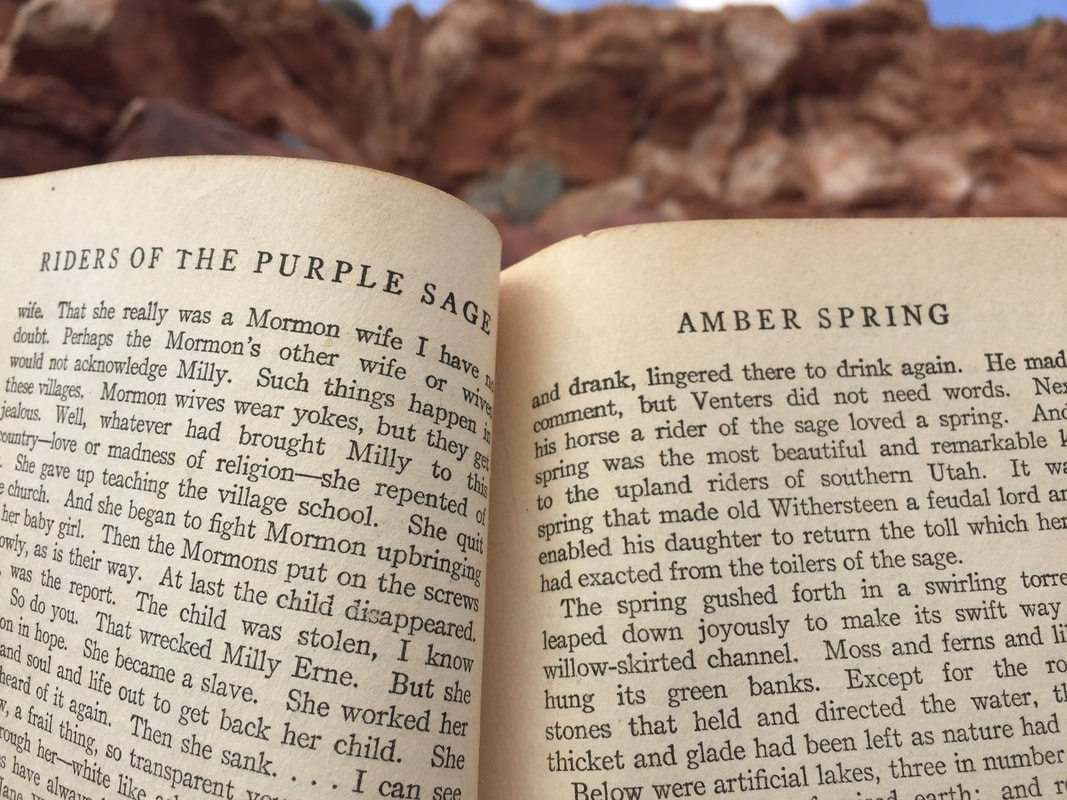Pipe Spring National Monument |
| |
The red stone fortress of Winsor Castle is as breathtaking in its own way as the geologic wonder of the Vermillion Cliffs that frame it. Pipe Spring was established by Mormons as a tithing ranch in the early 1870s and brought the first telegraph to Arizona Territory. It was a popular spot on the “Honeymoon Trail.” Travelers on their way to get married in the Temple in St. George would water their horses at Pipe Spring - a piece of history that may have inspired Zane Grey’s iconic opening scene when Lassiter stops to water his horse and interrupts Elder Tull preparing the whip Venters.
Completed in 1872, the fort was built directly over its water source so pioneers could lock themselves inside and persevere through Navajo raids, or outlast troops sent by the Federal government looking to arrest polygamists. Those attacks never came and the settlers peacefully grazed cattle and made butter and cheese that supplied Mormon families in the region until the 1890s.
Completed in 1872, the fort was built directly over its water source so pioneers could lock themselves inside and persevere through Navajo raids, or outlast troops sent by the Federal government looking to arrest polygamists. Those attacks never came and the settlers peacefully grazed cattle and made butter and cheese that supplied Mormon families in the region until the 1890s.
"The home of Jane Withersteen...was a flat, long, red-stone structure with a covered court in the center through which flowed a lively stream of amber-colored water."
- Zane Grey, 'Riders of the Purple Sage'
Along with the pioneering history of the Arizona Strip, we discovered Zane Grey's creative process. Grey would visit remote places that were still mysterious and exotic, hear the stories from the people who lived there, and learn the hardships of fashioning a life on the bleeding edge of the frontier. He would then sit down with pencil and paper and voraciously write his experiences of the landscape and its characters with a fictional mix of romance and action. Zane Grey's Western novels defined a new American genre and left a legacy that would inform other novels, movies, TV shows, and the way we think about the mythic territory of the West, for years to come.
0 Comments
Authors
Our guest authors will explore the artistic process and the mythic territory known as the West.
Archives
October 2021
April 2021
March 2021
May 2020
November 2017




 RSS Feed
RSS Feed
